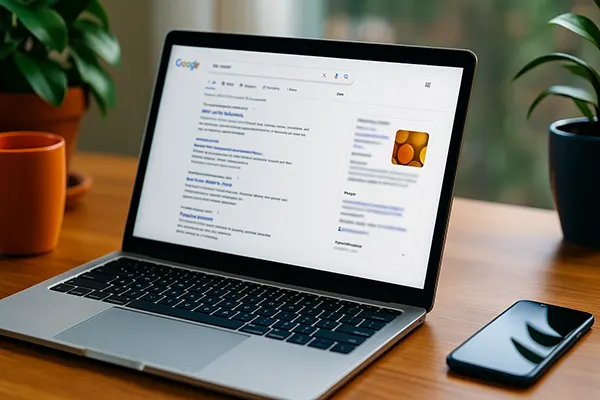
Marketing in a Zero-Click Environment: Adapting to a Search Without Traffic
In recent years, the SEO landscape has experienced a dramatic shift. Search engines increasingly provide direct answers to queries within the results page, reducing the need for users to click on links. This so-called “zero-click environment” poses a new challenge to marketers and content creators. In 2025, surviving in search means embracing smarter strategies that focus on visibility, trust, and user experience—without depending on traditional traffic routes.
Understanding the Zero-Click Landscape in 2025
The term “zero-click search” refers to queries that are resolved directly on the search engine results page (SERP), preventing users from visiting external websites. Google continues to refine its AI-driven features such as featured snippets, knowledge panels, and AI Overviews (formerly SGE), all of which reduce the necessity to click further. As of early 2025, over 60% of searches on desktop and 77% on mobile end without a single click.
This trend has forced companies to rethink traditional SEO approaches. Instead of fighting for clicks, businesses now compete for visibility within the search engine’s own content ecosystem. This includes optimising content for AI-generated summaries, structured data, and local listings that display instantly in the results.
The rise of zero-click has implications beyond just rankings. It affects user behaviour, content strategies, and even how ROI is measured. Marketing is no longer about just bringing users to a site—it’s about owning every space where the brand can appear, even if it’s not on your domain.
Why Traditional SEO Is No Longer Enough
Classic SEO strategies relied heavily on ranking high in organic search results to gain traffic. But when Google or Bing answer a question directly, the value of ranking #1 diminishes significantly. This forces brands to rethink how they define success in SEO.
Marketers must now consider impression-level performance, SERP real estate presence, and branding within snippets and previews. SEO becomes a visibility tool rather than a traffic generator. Key performance indicators are shifting toward engagement metrics such as brand recall and SERP share of voice.
Failure to adapt means missing out on opportunities to appear in these new, prominent positions. Businesses that continue to optimise solely for clicks risk becoming invisible in an ecosystem dominated by zero-click behaviours.
Strategic Adaptation: How to Stay Visible Without Clicks
To maintain digital visibility in 2025, brands must focus on structured data implementation. Schema markup is essential to help search engines understand context and rank content inside featured elements. This includes FAQ, HowTo, and Product schemas that can be pulled into AI-generated search results.
Another vital approach is optimising for voice and AI queries. More than 35% of searches globally are now voice-based. Content must be concise, clear, and formatted to directly answer spoken questions, as these are often resolved without redirection to external sites.
Additionally, branding plays a major role. Logos, names, and trusted citations appearing in SERPs strengthen brand recognition—even when users don’t click. Investing in digital PR, reviews, and authoritative mentions helps ensure your business is represented where it matters most.
Content Design for Zero-Click Survival
Short-form, factual, and easily digestible content increases the chance of being selected for AI Overviews. Long paragraphs and vague structures no longer perform well. Instead, bullet points, tables, and concise Q&A sections are more likely to be picked up and displayed.
Updating content regularly is another key factor. Search engines prioritise freshness, especially in featured content. Static articles without recent updates risk falling out of AI summaries and other high-visibility sections of the SERP.
It’s also crucial to create content that aligns with user intent. Addressing real questions with precise, trustworthy information ensures your brand remains a valuable source—even when the full article isn’t read. This aligns with Google’s E-E-A-T criteria, where trust and expertise define visibility.

Metrics, Measurement and ROI in a Zero-Click World
Success in 2025 can’t be measured by sessions alone. Traditional analytics tools, such as Google Analytics 4, provide limited insight into zero-click visibility. Brands now need to track SERP presence through tools like Semrush, Ahrefs, and Similarweb, focusing on metrics such as keyword footprint, featured snippet acquisition, and brand mentions.
One emerging metric is “SERP impression share”, which tracks how often your brand is shown in search, regardless of whether it receives a click. This is especially important for industries where zero-click dominates, such as finance, health, and travel.
Offline impact must also be considered. When a brand frequently appears in search, even without clicks, it influences perception, increases trust, and drives conversions through other channels like direct traffic, social media, or voice commands.
Marketing Teams Must Shift Focus
Instead of focusing only on page visits, marketing teams need to understand how search exposure translates into awareness and authority. Internal reporting systems must adapt to include non-click metrics and engagement from indirect sources.
Content calendars should also evolve. Rather than chasing high-volume, competitive keywords, teams must identify question-based queries, local intents, and areas where structured data can make the most impact. It’s about occupying space, not just ranking positions.
Finally, collaboration between SEO specialists, content creators, and brand strategists is essential. Surviving in a zero-click ecosystem demands cross-functional planning where each department contributes to comprehensive visibility—even when clicks never happen.
